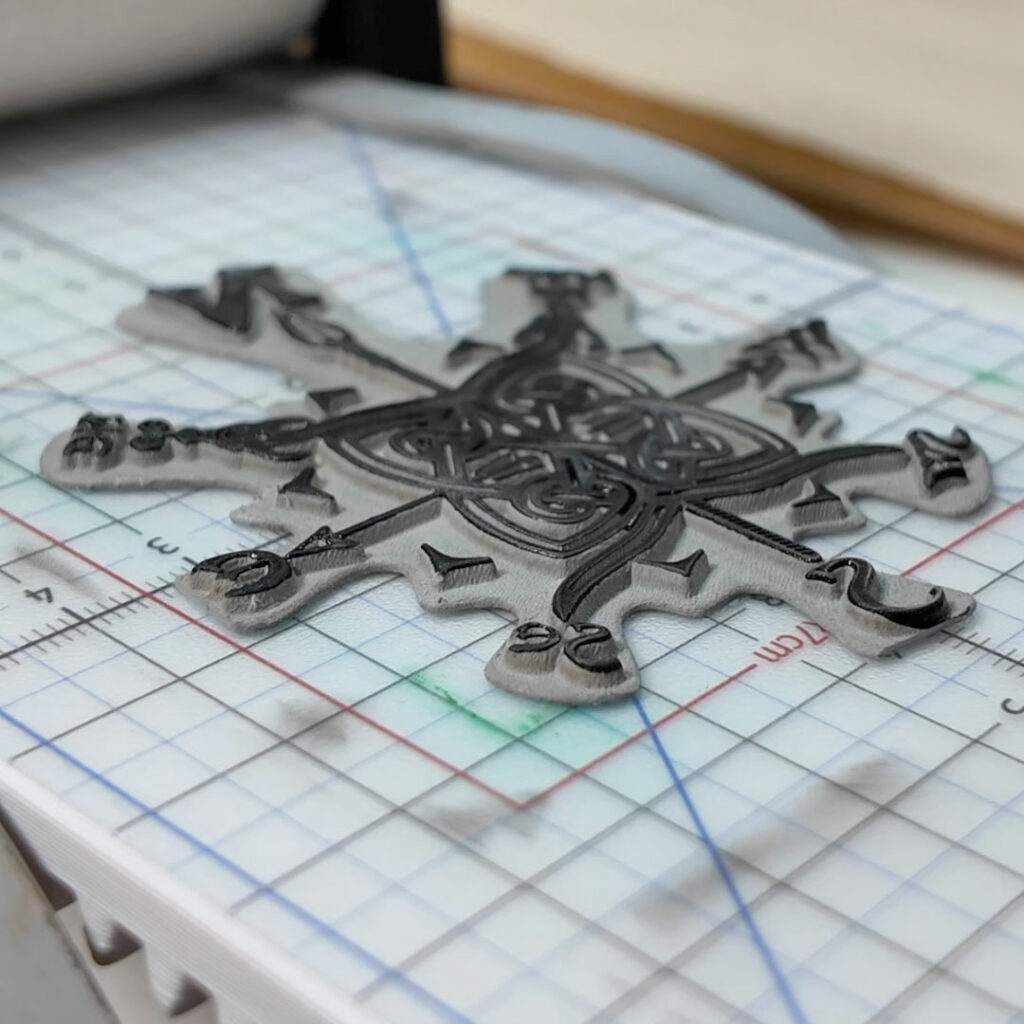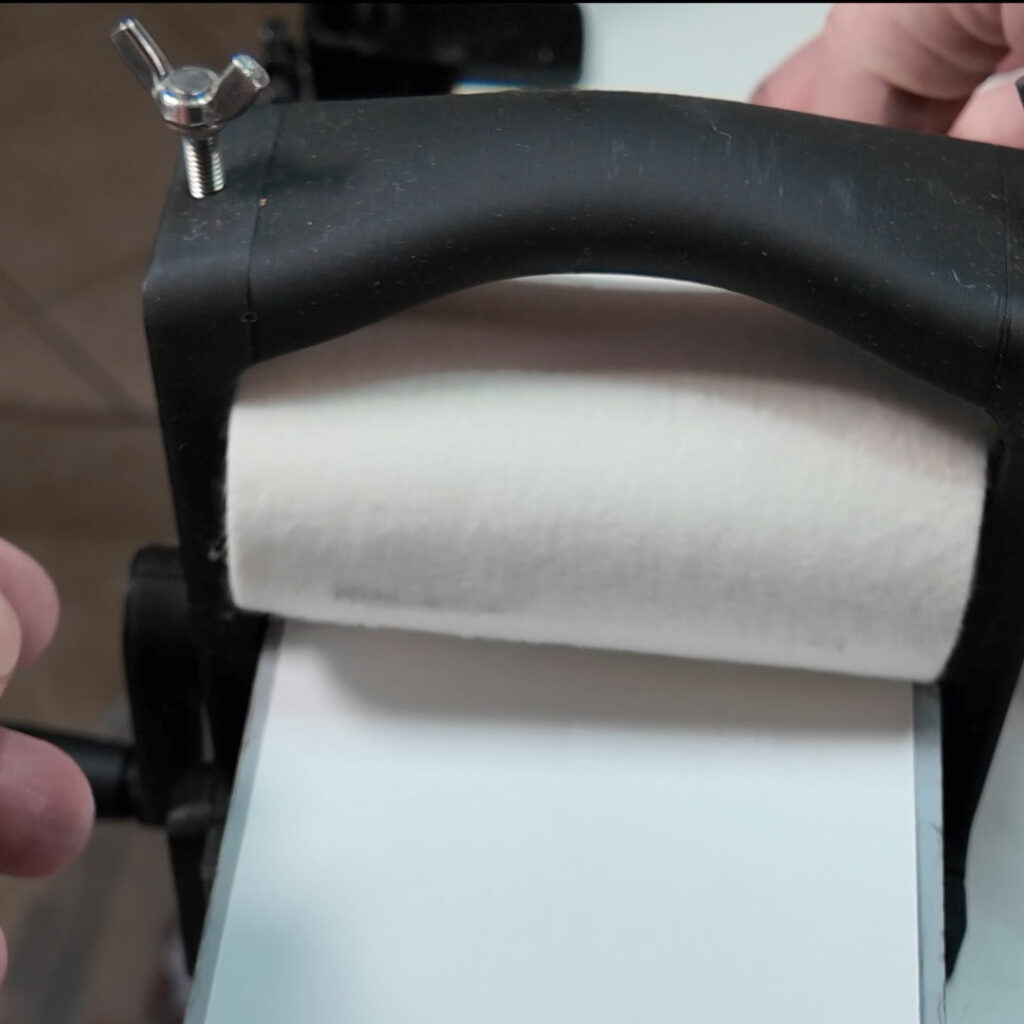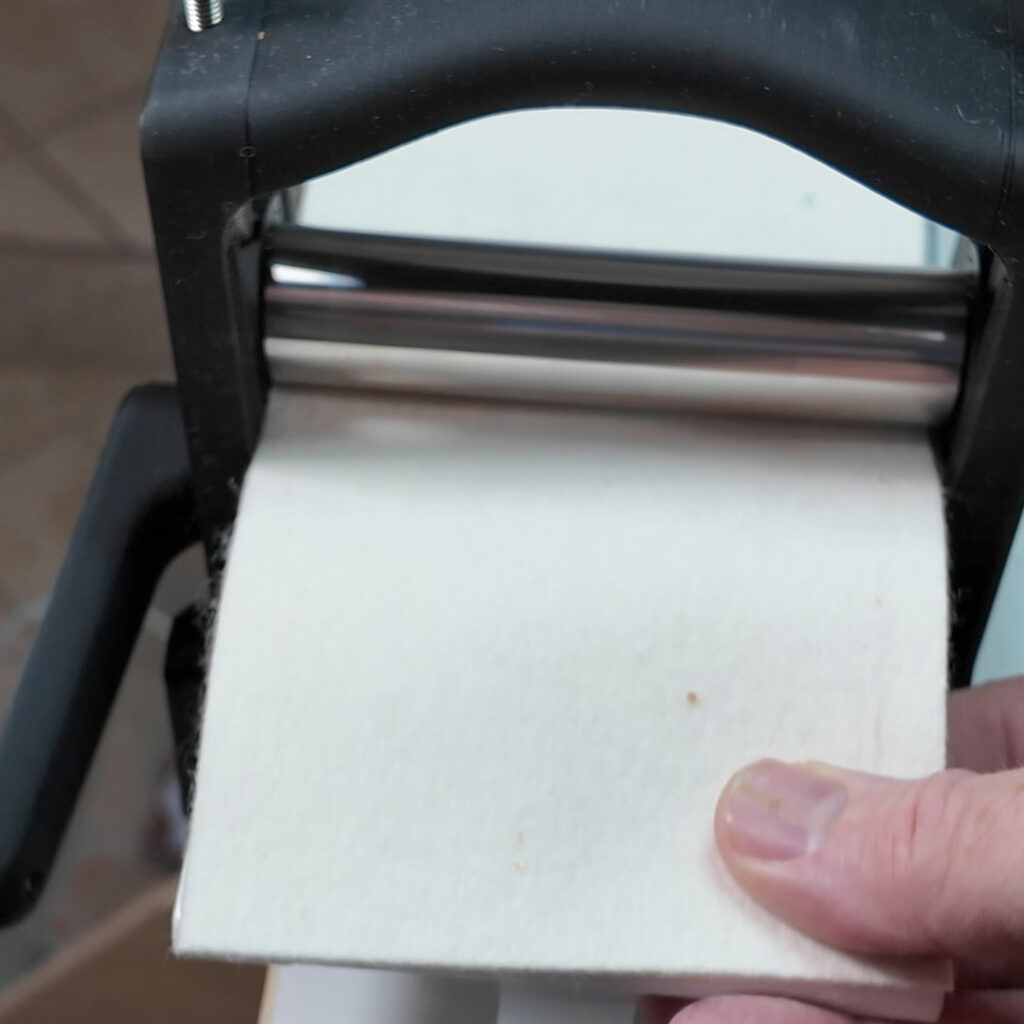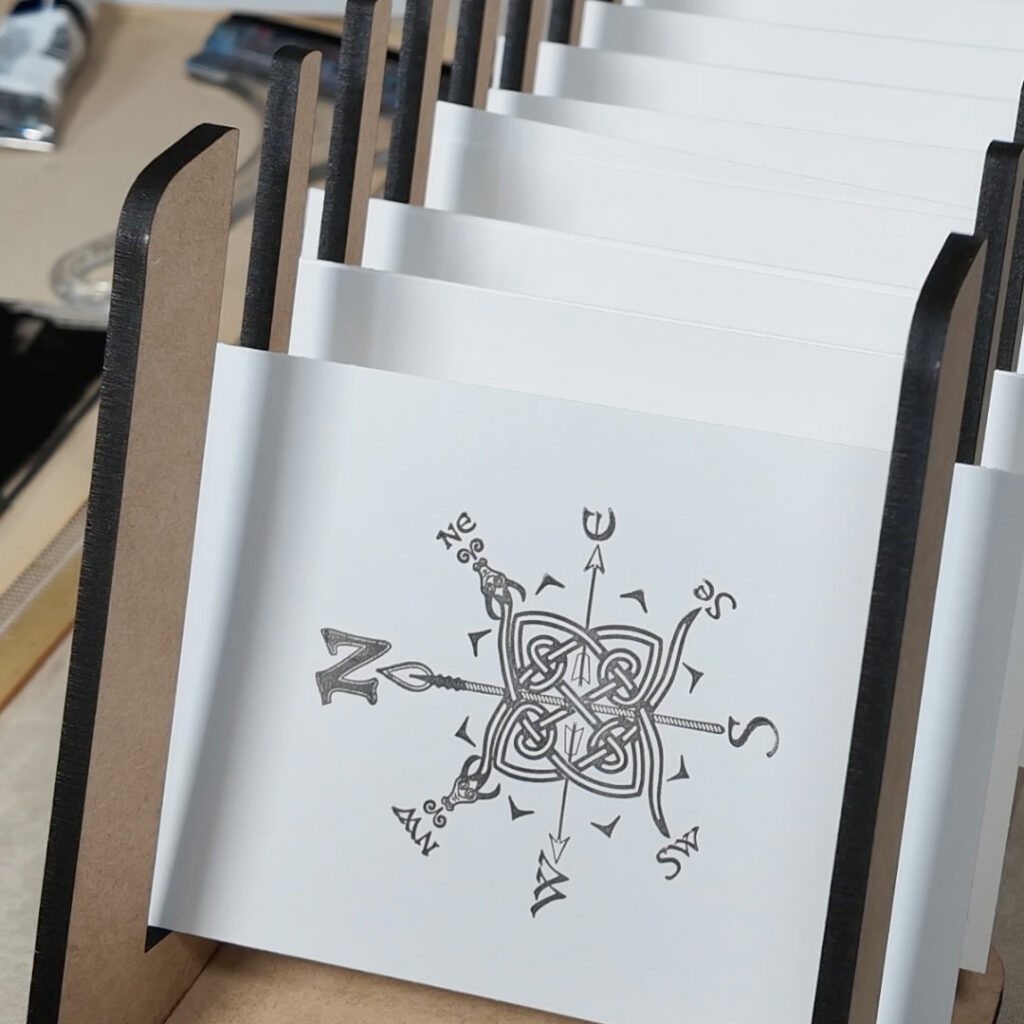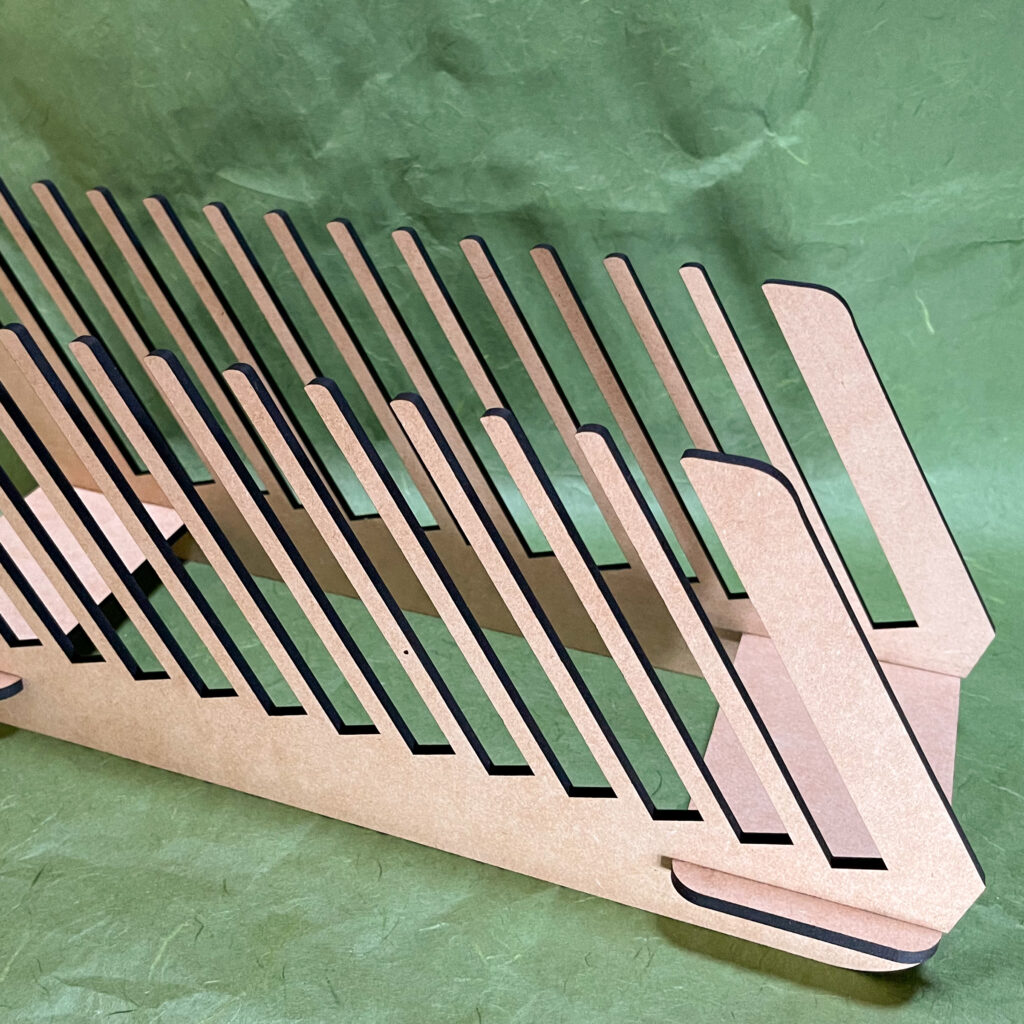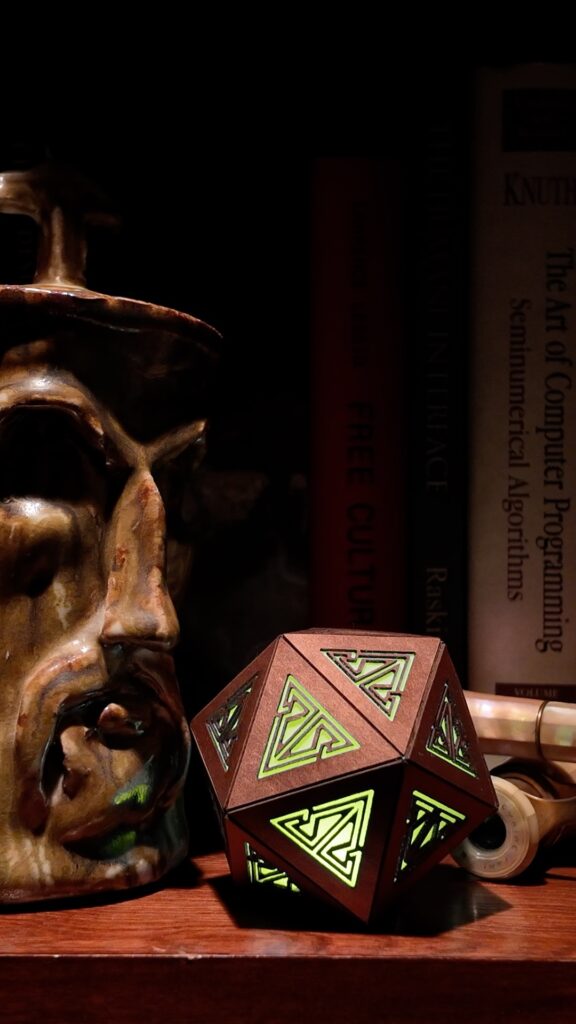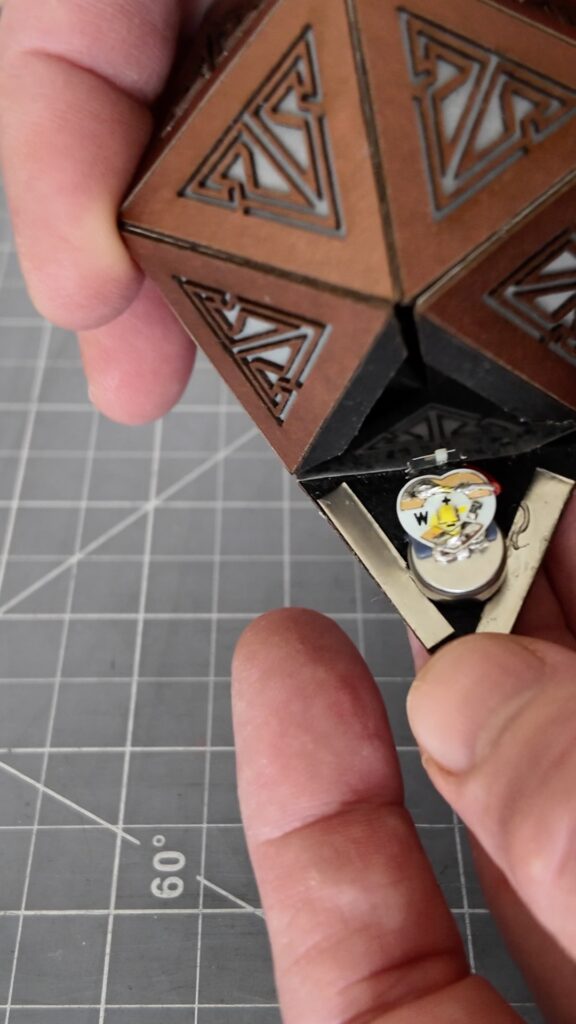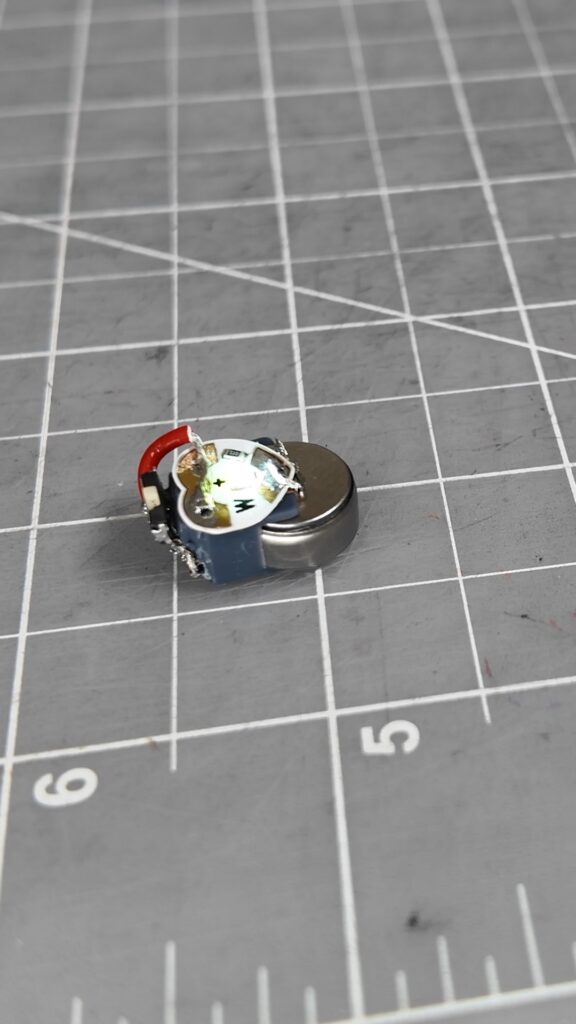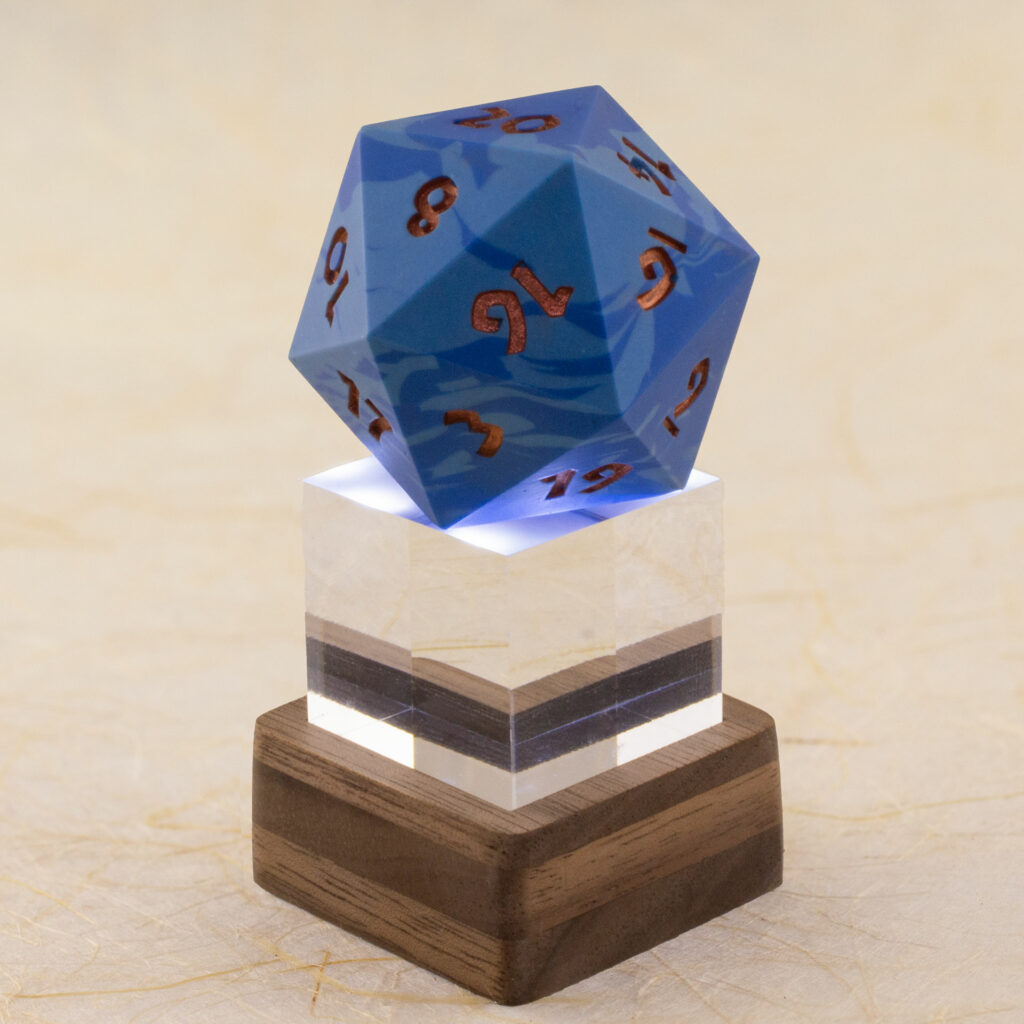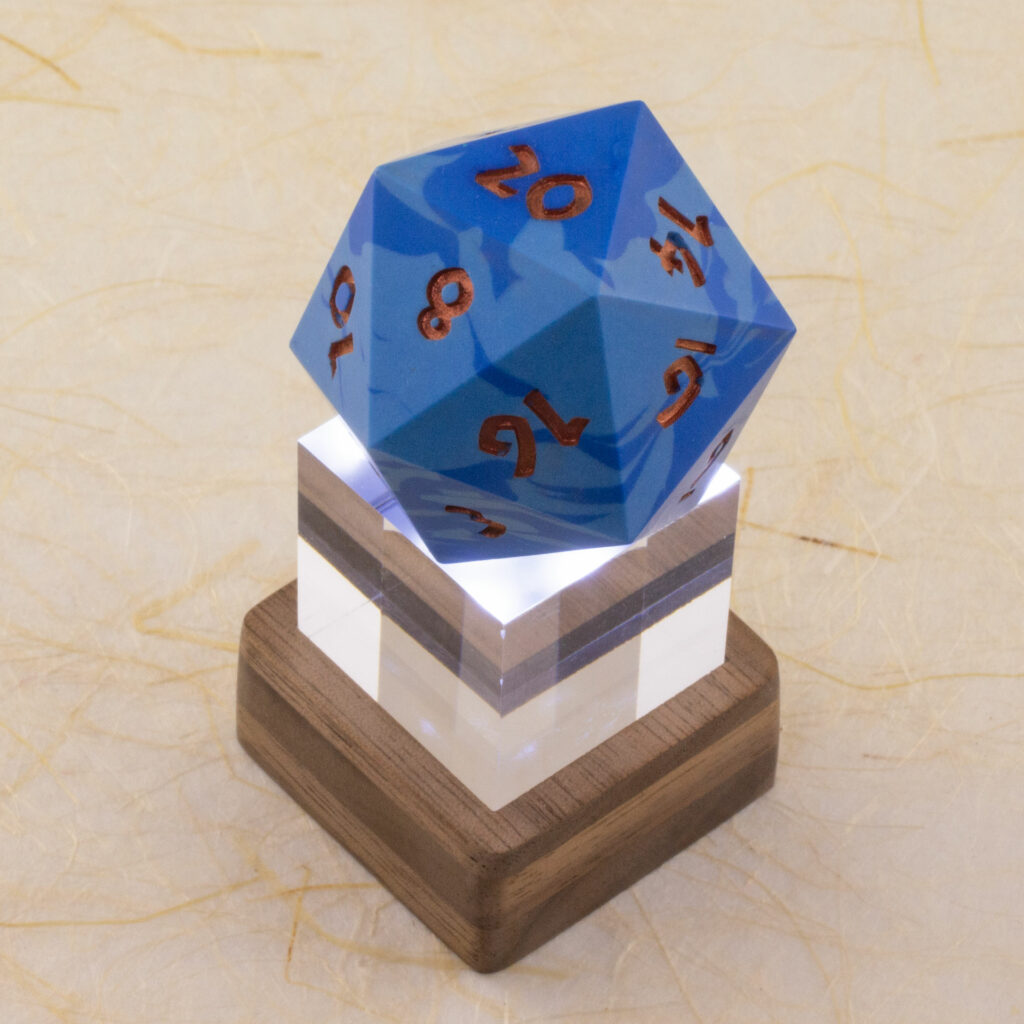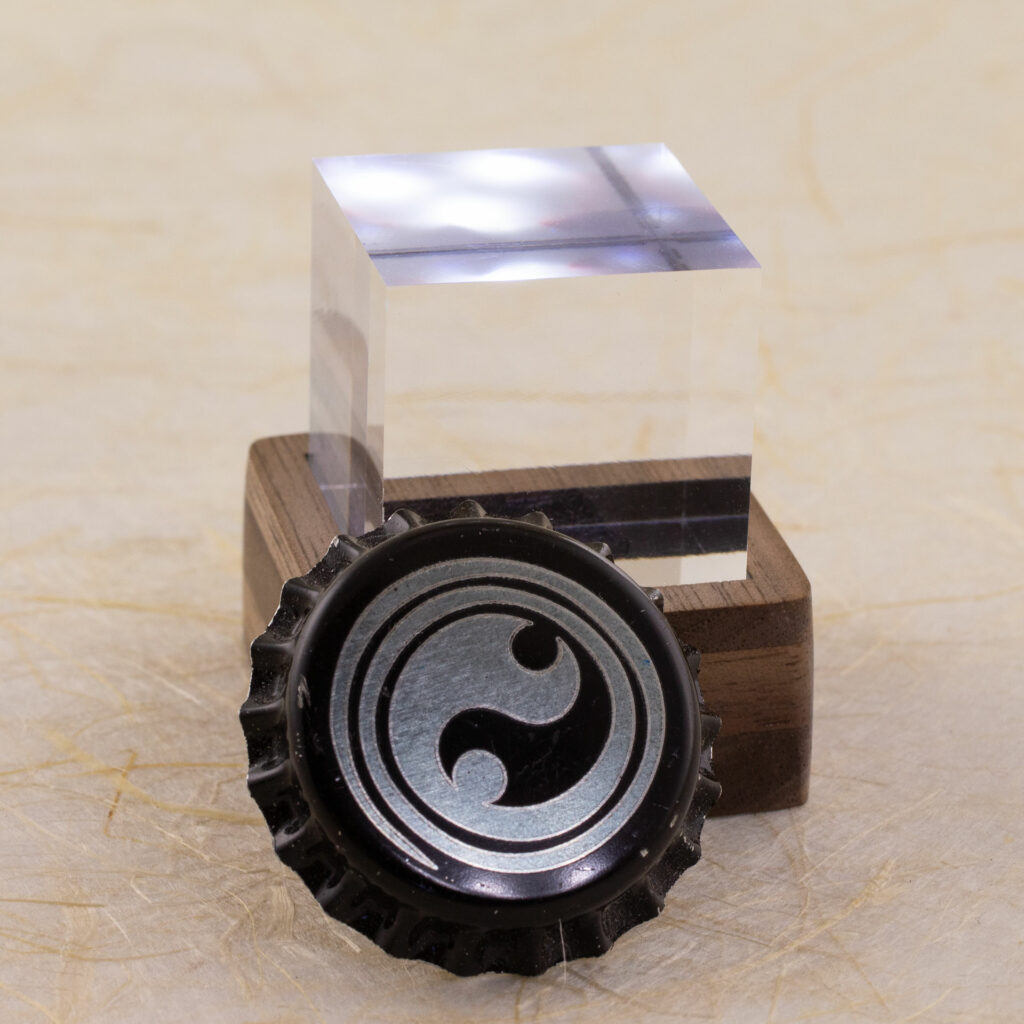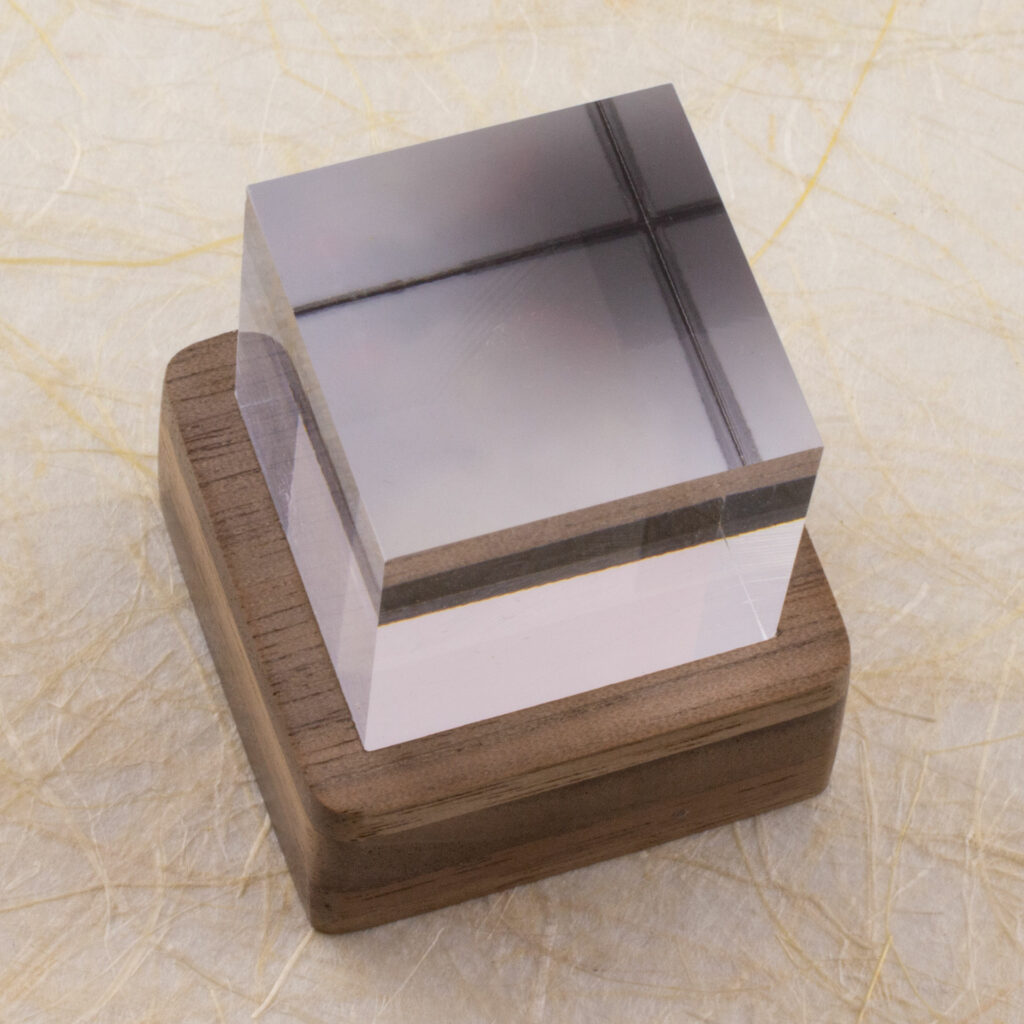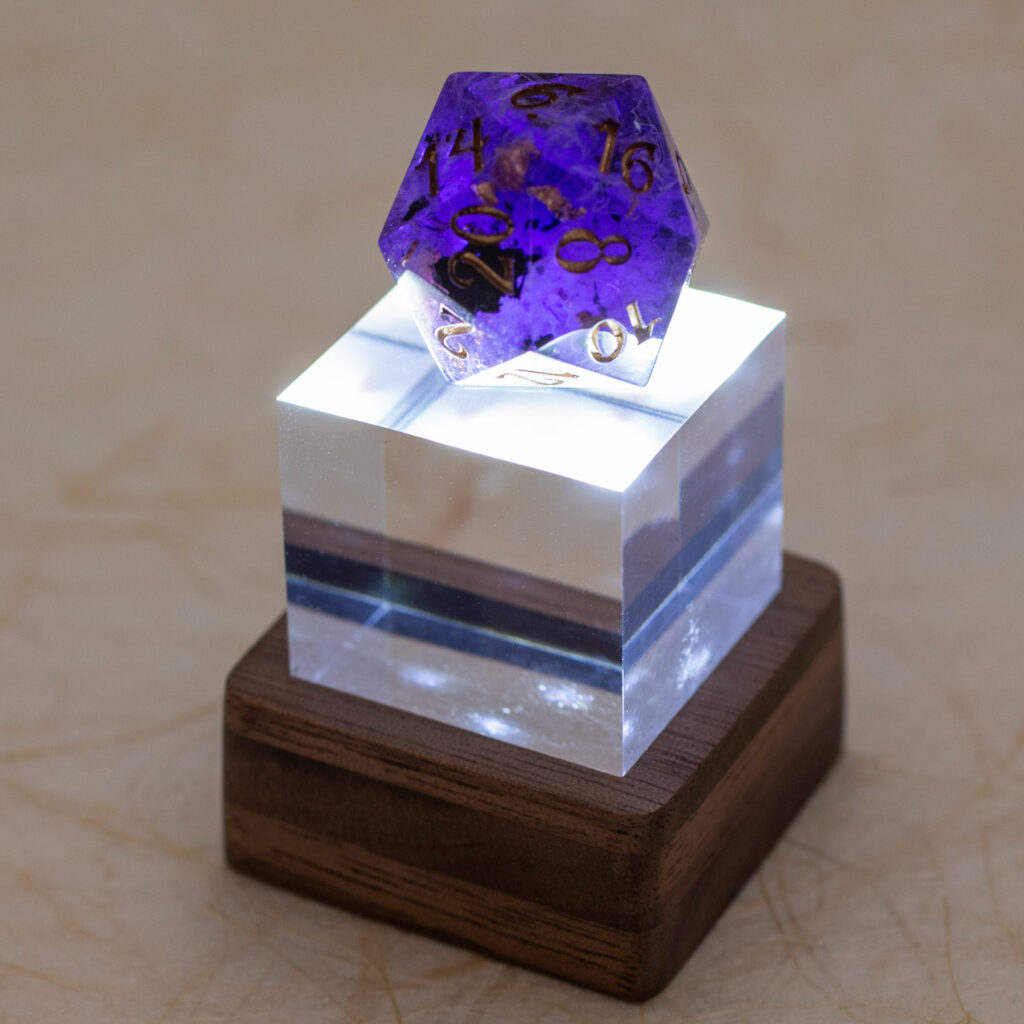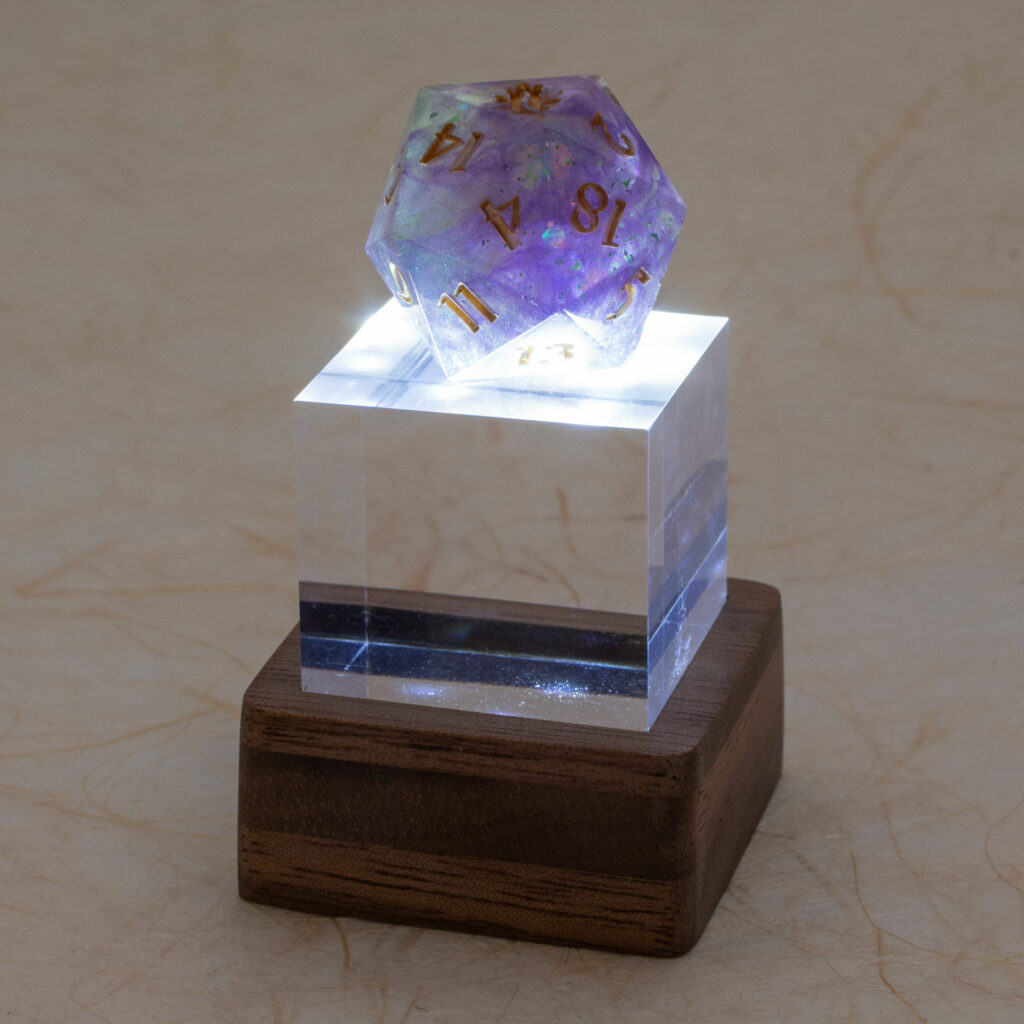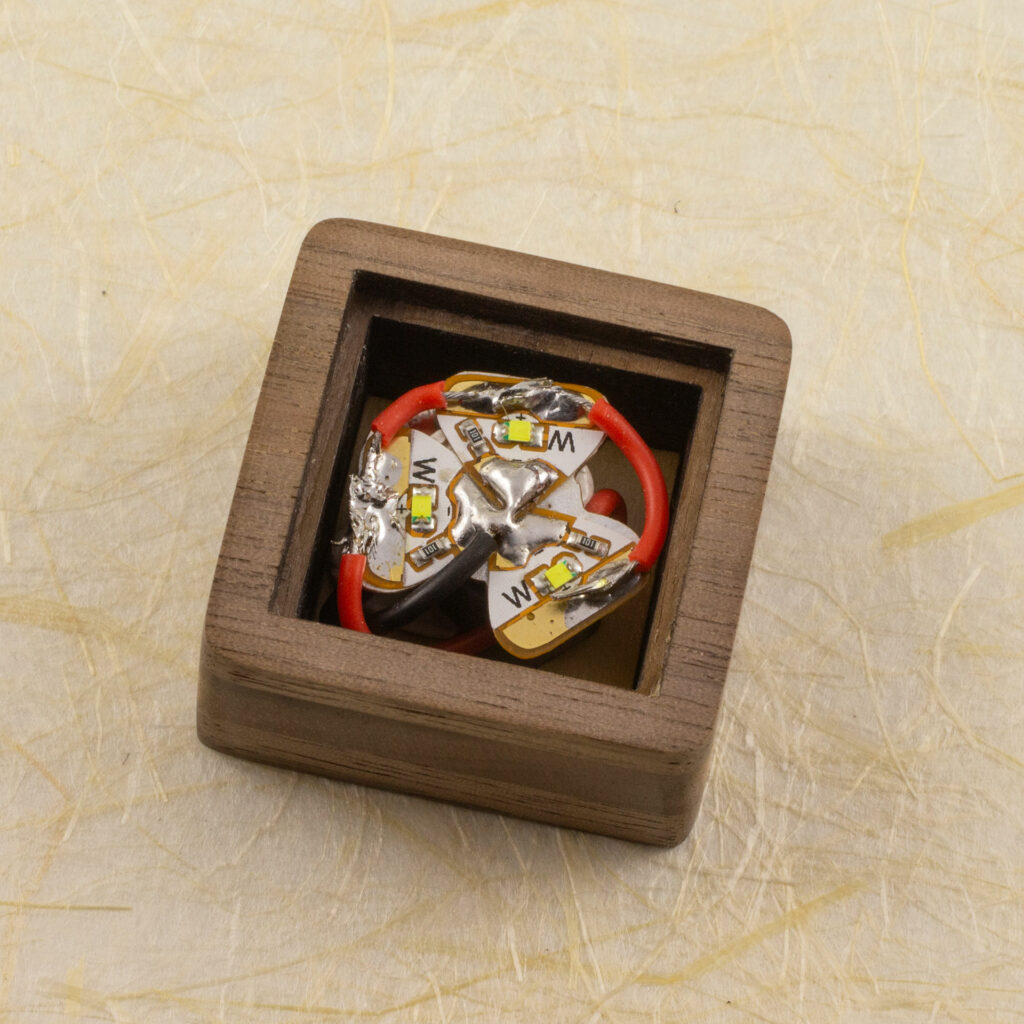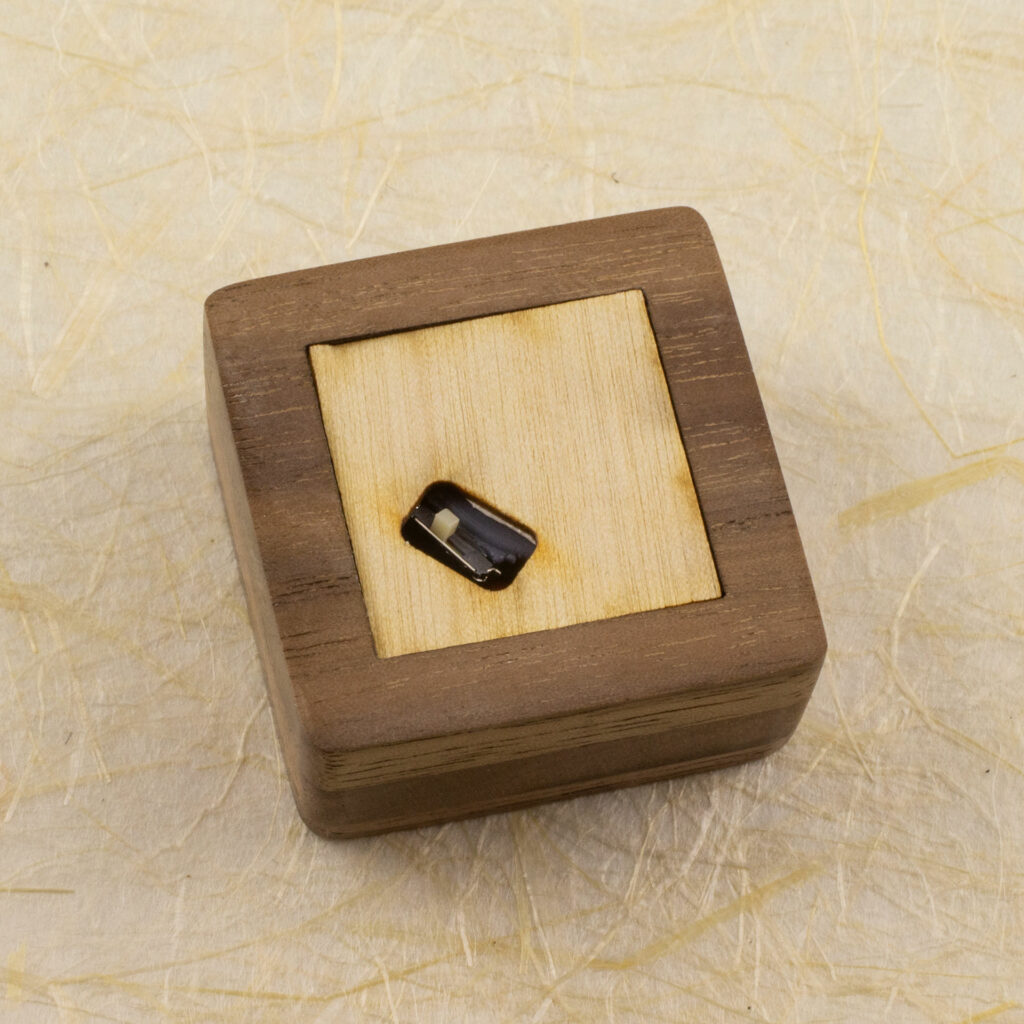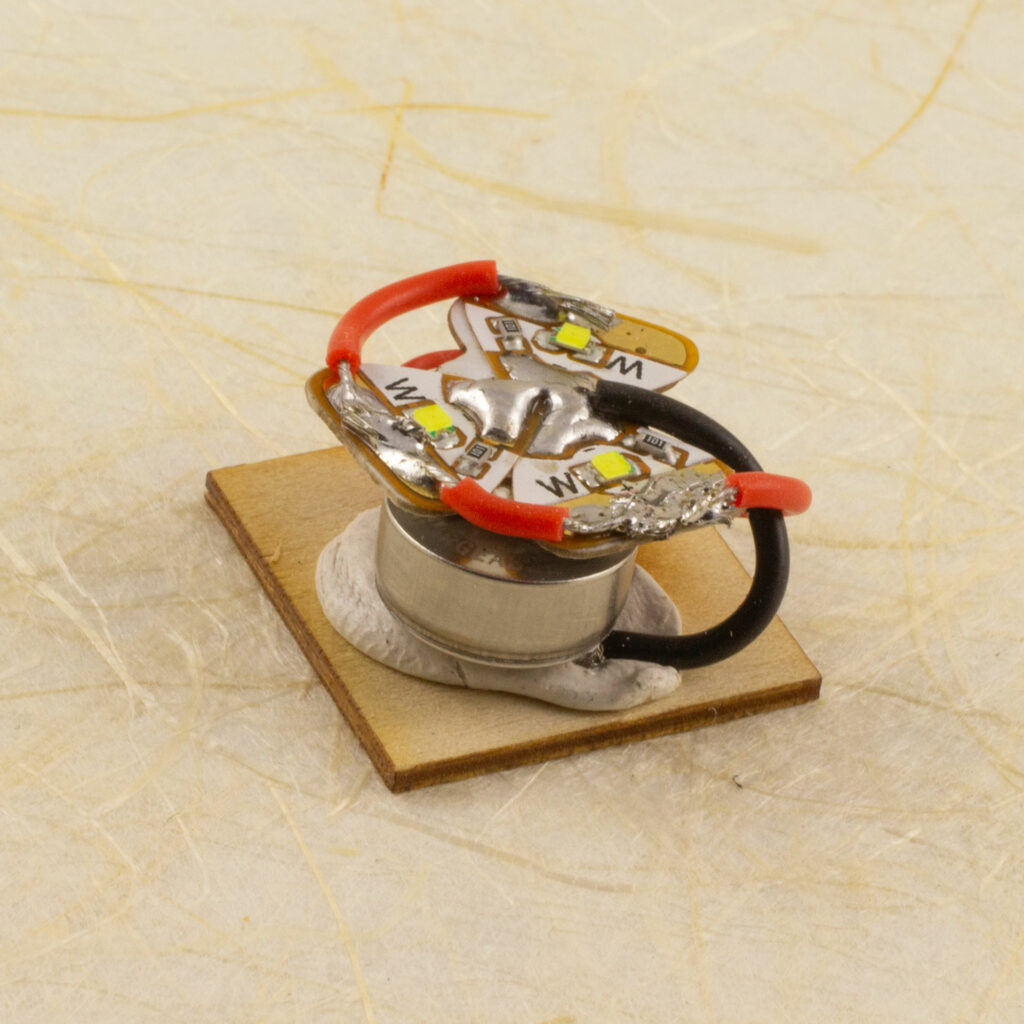
Dragons Celtic Knotwork Map Compass Print
I have been wanting to design a Celtic art map compass that would be appropriate for fantasy maps. Entwined dragon bodies seemed like a good theme. The N-S axis is intended to be Gungnir, Odin’s spear from Norse mythology.
I made a laser-engraved rubber plate from my vector image, then printed on the new OpenPress Postcard Printing Press.
I made the print drying rack for an earlier printing project I haven’t gotten around to posting. It is a simple four-piece laser-cut design that comes apart for flat storage. I added the cutting files for the print drying rack to the Subscriber Archive as a free download, in case it is of use for anyone.
I made a 1-minute printing video:

Rechargeable Light-Up Icosahedron
I wanted one of the copper light-up icosahedra for the bookshelf in my office. I wanted to be able to leave it on to enjoy periodically without putting a bunch of the CR2032 coin cells in the landfill. I also wanted it to be easy to operate without using tools, and not super fragile.
After a fair amount of experimentation, I came up with this tiny 3D-printed light. It uses a rechargeable LIR1254 coin cell that can be easily removed (or swapped) for recharging in an external charger.
The bottom panel hinges open for access to the light. I used strips of foil made for EM shielding applications and tiny neodymium magnets to hold it closed.
I have been playing with it for a few days, and it seems to meet my design brief above. It runs for at least several hours on a charge (I haven’t yet exhausted a fully-charged battery with it).
I put the 3D model (STL) for the battery holder in the Archive for free download, in case it is of use to anyone. There is also a basic icosahedron pattern with the previous Small Polyhedra post.
There is a 3.5-minute video short walking through the design evolution and assembly.

Small Light-Up Stand
I was thinking about ways to get a little bit of extra light to the bottoms of some small objects I have been photographing recently (particularly dice), and to get light passing through translucent objects in a way that would highlight them. I envisioned something that used a piece of clear acrylic to transmit the light to the subject while not having an opaque base in the way.
This prototype is the result. The base is several layers of laser-cut walnut, glued together and finished. There is a cavity for the light and a lip that supports a piece of diffuser material and a 1-inch acrylic cube.
The electronics are pretty hacky. I recently designed some 3D-printed lights that hold LIR1254 rechargeable cells, a Chibitronics Circuit Sticker, and a tiny surface-mount switch for use in making rechargeable versions of my paper icosahedra. This is a variant of those with three Circuit Stickers (for more light) and the switch mounted upside down (for access through a cut-out in the base). This could be done more elegantly with a custom circuit board, but this seemed good for a prototype.
Since I have only made opaque Jesmonite dice to date, I used some resin dice sent to me by friends to try it with translucent objects. The darker purple one is from Rosey Cricket, and the lighter one is from Silverleaf Dice. If you like dice, you should go check out all the wonderful pieces they make.

Wood Inlay Floppy Disk Tack Pin
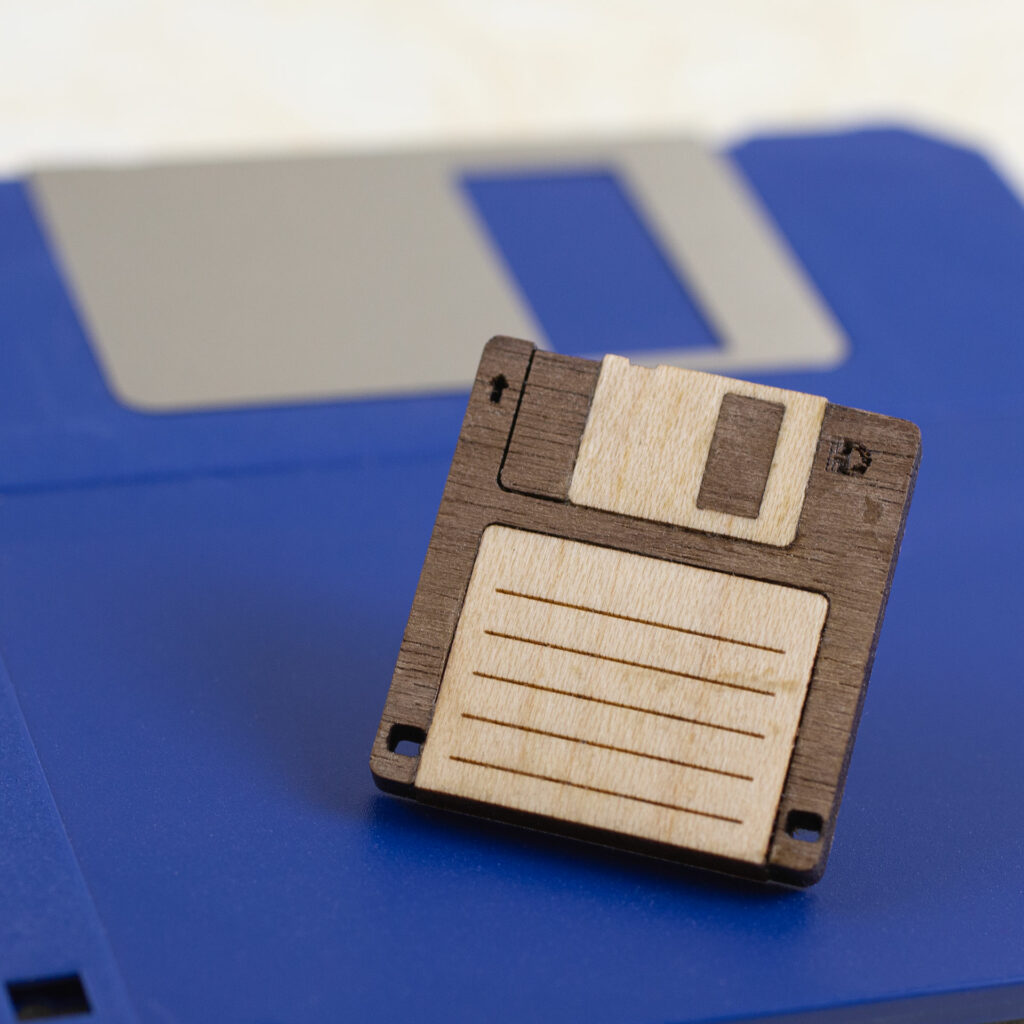
I made these little wood inlay save icon pins as gifts for April birthdays.
I traced a photo of a 3.5″ floppy disk in Inkscape, scaled it to 1″ (~24mm) square, then separated the pieces and kerf corrected them. I laser cut and engraved the pieces from 3mm thick walnut and oak. I assembled the pieces with wood glue, gave it a light sanding, then finished with wipe-on polyurethane (three coats, with a very light sanding between coats and at the end). The tack backing is attached with construction adhesive.
After consulting with a friend who wears a lot of pins, I got a collection of backings, including the traditional butterfly backs, rubber backs (softer and less irritating for skin contact), and locking backs (to reduce chance of loss).
There is a 2-minute making-of video:

Celtic Key Pattern Washi Tape Tack Pin
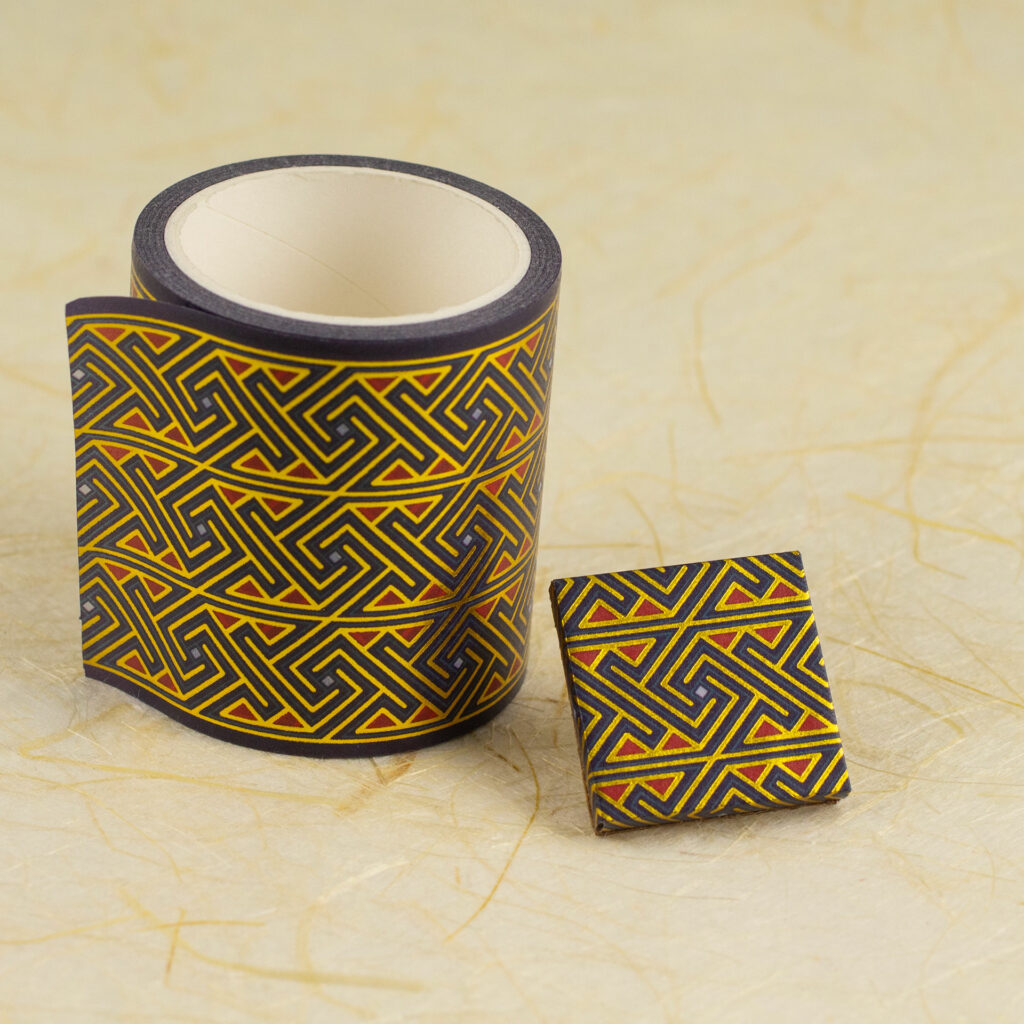
I am working on some larger projects, but I had this idea for a quick pin with one of the new washi tapes. This is a 25mm square of Baltic birch carefully wrapped with the wide Celtic key pattern washi tape. I used a bit of wood veneer attached with 3M Very High Bond film to lock the tape down, and attached a tack pin back with construction adhesive.
I made a quick one-minute process video, too:


